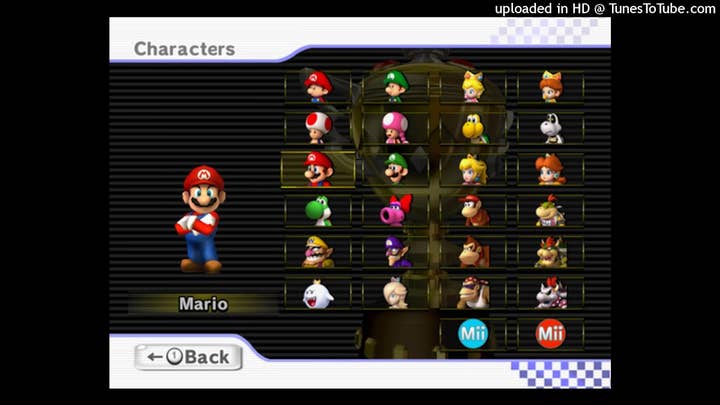Adaptive audio in menus: game development's untapped opportunity
Unlock Audio's Elliot Callighan looks into ways to make menu and lobby music more engaging
When developing a game, it's easy to focus on the obvious sound elements, like sweeping scores and fulfilling sound effects, yet some of gaming's most influential moments occur even before or between gameplay.
Today, we're shining our audio and music spotlight on menus, tutorials, lobbies, and more -- all unsung heroes of the player experience -- and calling attention to a typically overlooked opportunity to provide more engaging audio.
Think about it this way: games that boast astounding in-game sound yet still suffer bland menu or lobby audio are as common as they come. But games that give attention to these interfaces which players have no choice but to engage with are a magical experience all their own. In particular, adaptive music provides developers a concrete way to turn menus and lobbies into much more than an atmospheric void between spectacular realms.
First things first: What is adaptive music?
Put simply, adaptive music means your game's music actively changes to suit the shifting environments, atmospheres, and evolving gameplay. This change often occurs subtly or smoothly, feeling more like a natural progression than a hard cut between tracks.
This dynamic approach to game music boosts cohesion to the overall player experience, empowering their decisions
This dynamic approach to game music boosts cohesion to the overall player experience, empowering their decisions and sense of progress while minimizing moments that might take them out of the game.
What's especially nice about adaptive music is that it feels player-driven. As the person behind the controls, you begin to feel that your decisions or movements make a real difference based solely on subtle changes in what you hear. Something as simple as a tonal shift might imply a hidden change waiting to be discovered. Or it can confirm what your eyes are already telling you -- that you've crossed a threshold from one area into another, while a familiar motif tells you, "You're still in Kansas, Dorothy."
Be immersive from the start
Imagine you're launching a new game for the first time. What do you expect?
After a quick graphic splash or cinematic video, you probably anticipate an encounter with the omnipresent Start Screen. Nothing crazy or unusual -- simply a well-traveled stepping stone to getting your gameplay off the ground. Here, you're usually presented with three or so standard options: New Game/Start, Controls, and Settings.
The moment a player chooses New Game/Start, a world of opportunity unfolds -- especially if any tutorial or onboarding is needed. It's here where music can truly plus-up a gamer's experience, drawing them in deep from the start and fueling their expectations for whatever style, tone, and complexity of gameplay lies ahead of them.
Adaptive music and sound helps provide even more cues, both big and small, for gamers to glean important information from
And what is gameplay if not a relationship between gamers, their imagination, and the stories being shared through visual, audible and tactile experiences? Much like any relationship, understanding comes from recognizing signs (both obvious and not). Adaptive music and sound helps provide even more cues, both big and small, for gamers to glean important information from and deepen their connection to the game.
As a player's first impression, menus and gameplay intros are a crucial opportunity to truly make your player feel engaged. Just as studios entrust these upfront interfaces to the sharp sight of UI designers, the keen ears and input of a sound designer or audio partner can (and should!) advance the role of music and sound in amplifying the gamer experience.
Do as the pros do
Let's peek at a prime example of this principle with a game from none other than Nintendo. Nintendo pays amazing attention to the musicality of its franchises, resulting in masterclass after masterclass in dynamic game sound.
For our purposes, we'll examine Mario Kart Wii using Project Longplay's playthrough intro.
The menu magic begins the moment we "Press the A Button" to start (1:54). After selecting the number of players involved, we see a Jumbotron offering four play styles to choose from. The backtrack kicks off with a fast, rhythmic bassline and light piano trills, immediately setting the energy, encouraging us forward. On choosing our race mode, the menu asks us for one more detail: which speed (or difficulty) would we like to race with -- 50cc, 100cc, or 150cc?
On selecting our speed (2:32), the music immediately gets more complex, introducing new elements right at the point wherever we already were in the backtrack. Now the rolling rhythmic track bounces with upbeat piano chords. Starting to feel excited? Us, too.
Next we select the character and vehicle combo. Easy enough, but there's another layer still. After choosing our racer and car, we slide to a screen offering various racetracks (2:52), and the music takes on even more complexity, telling us the thrill of the race is just around the corner. We choose our courses, and the starting line appears.
Use audio and music to generate momentum and excitement to lead your player to gameplay
At each step of the way, Nintendo uses simple, adaptive music to direct our attention, lend a feeling of power to our decisions, and ramp up the energy around the gameplay to come. They could have slapped on a simple, looping backtrack and called it a day, but their dynamic approach is so much more rewarding to the player.
Use audio and music to generate momentum and excitement to lead your player to gameplay. Tricks like this are one of the many reasons Nintendo maintains its reputation for all-around friendly and accessible game experiences.
Skip the elevator music
Think of menus and lobbies as an elevator for a moment. These interfaces fill the gaps between gameplay much like an elevator does between floors. But elevators lack a sense of directionality. You don't feel as if you are moving anywhere, you just arrive. The only real context clue that a change is happening might be the ping of a new glowing number. And the stagnant soundtrack to your ride is dull and indifferent to your journey. In an elevator, you simply exist.

This scenario is fine if your game is an elevator simulator. But for other more dynamic experiences, adaptive music provides a better alternative. The adaptive approach considers both your origin and destination and adjusts to empower your journey, helping you feel like you're actually going somewhere.
Defy stagnation by ditching static sound. Consider music that ebbs, flows, and ultimately propels players into their first taste of gameplay.
How might your audio evolve differently as your gamers progress through fantasy RPG character creation or tumble into the mysteries and suspense of a horror survival game?
Make menus more than an afterthought
Music and sound are incredible tools to generate energy and provide information, improving the quality of play. Adaptive music allows developers to turn otherwise overlooked menus and lobbies into a core element of the overall game experience and create more frictionless games. This underused, dynamic approach to game sound provides gamers with a greater feeling of control and influence while also helping them along the way, even in those moments between.
Treat menus and middling moments as "levels" all their own. By lending more creative license to audio partners or sound departments in standard game interfaces, studios can transform these carefully designed visual tools into multisensory experiences that allow gamers to feel like every keystroke or button press makes a difference as they delve into new worlds and stories.
Elliot Callighan is a composer and sound designer, and the owner of Unlock Audio. He is also a Captain in the Army National Guard and teaches music and audio curriculum as adjunct faculty in the game and film programs at DePaul University in Chicago.

